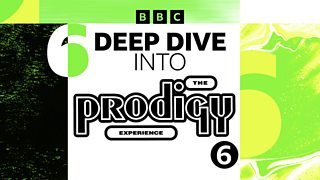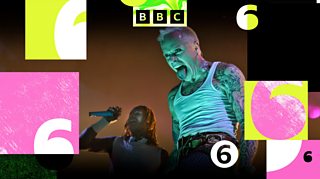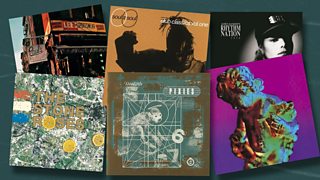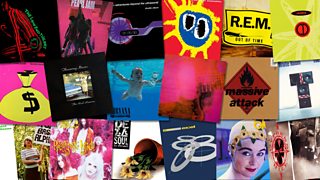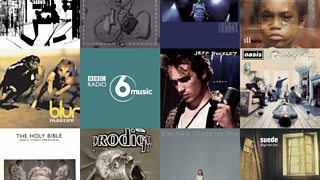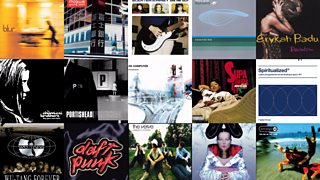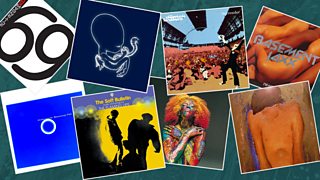20 albums that define 1992
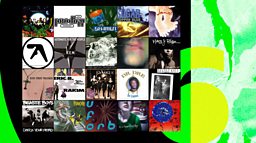
On 28 September 1992, The Prodigy's Experience was first released. To celebrate it's 30 year anniversary 6 Music dedicated Wednesday 28 September to 1992 and the rave phenomenon of the early 90s, playing the album in full across the daytime shows and nothing but tracks from its year of release.
We hear from artists who were influenced by the album in 6 Music’s Deep Dive into The Prodigy’s Experience, and raid the archive for more gems in the 6 Music Prodigy Artist Collection - which includes Liam Howlett’s seminal Breezeblock mix from 1998 [all available now on ���˿��� Sounds].
To mark the occasion, we take a look below at the defining albums of 1992. Keep reading to discover more about hugely influential albums from the likes of Dr Dre, The Orb, Aphex Twin, PJ Harvey and many more.
-
![]()
Listen to 6 Music’s Deep Dive Into The Prodigy
Hear The Prodigy’s Experience in full, with each track introduced by an artist who was influenced by the group - including Sleaford Mods, Nova Twins and Moby.
The Prodigy - Experience
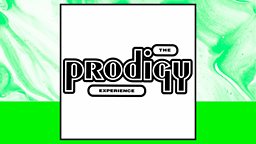
Forming in Essex, The Prodigy burst onto the scene in the early 90s and changed the direction of electronic music forever. Their acclaimed debut Experience was the brainchild of Liam Howlett, his flair for constructing energetic rave tracks across the record made for an immersive, exhilarating listening experience which redefined dance music and was central in bringing rave culture into the mainstream. Peaking at No.12 in the UK Albums Chart, the album went onto achieve platinum status in the UK. If you want to be transported to the early 90s rave scene, this is the record to listen to - perfectly capturing the energy and spirit of the time.
Liam Howlett tells 6 Music about Experience: "I was so submerged in the rave culture from 1990 leading up to this first album and that sound was just in me. To me, that whole album is like a snapshot of the sound of that period and what we were about at the time. It's a more 1992 sound, you can tell by the speed of the tunes, everything started to get faster from 1991 to 92."
30 years on, the group are one of the most successful electronic groups of all time, spawning countless hits and earning titles such as 'the premiere dance act for the alternative masses' and 'the Godfathers of Rave'.
Aphex Twin – Selected Ambient Works 85 – 92
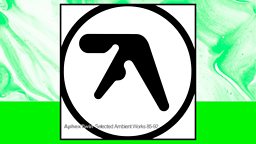
Richard D. James, better known as Aphex Twin, started experimenting with musical instruments and equipment at an early age. His debut album Selected Ambient Works 85 - 92 consists of tracks dating back to 1985, made by a 14-year-old James who was creating music in his bedroom on self-modified synthesisers. The album is made up of ethereal, toned down dance music unlike anything else on the scene in the early 90s - for a review in Melody Maker in 1992, Andrew Smith wrote "Not since Kraftwerk has an artist understood texture in this way, made electronic music sound so organic and resonant, so full of life."
Widely-heralded as one of the greatest albums of the 90s (if not all time), it's had a huge influence on modern electronic music, and Aphex Twin has established himself as one of the key musical pioneers of the last 30 years.
Beastie Boys – Check Your Head
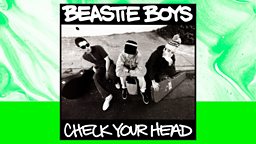
Check Your Head followed the Beastie Boys' 1989 album Paul’s Boutique which was considered a commercial failure when it came out (but retrospectively received critical-acclaim for its use of sampling). It was a tricky era for a group in the early stages of their career and with Check Your Head, the boys picked their instruments back up with Mike D on drums, Adam Yauch on bass, Adam Horovitz on guitar and Mark Ramos Nishita on keyboards.
This record sees the Beastie Boys return to their punk rock roots, particularly in tracks like ‘Time for Livin’’ and ‘Gratitude’ with a harder rock sound and more guitar, whilst also experimenting with funk and jazz. While the two previous albums positioned the Beastie Boys as a rap group, this third release opened them up to a wider fan base of both hip-hop and rock fans, influencing the nu-metal genre that gained popularity in the mid-90s.
Bikini Kill – Bikini Kill
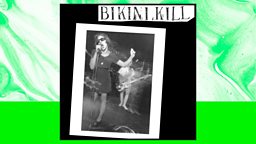
Two years after forming, Bikini Kill released their self-titled EP full of abrasive, explosive punk that is defiantly imperfect. Kathleen Hanna’s vocal performance is powerful and visceral, as she covers topics including violence against women and misogyny.
The palpable energy of this EP takes you back to a time when Bikini Kill were just starting out, pioneering the riot grrrl movement that has inspired so many people in the decades that followed and is widely referenced today. In the early 90s, the band were regular performers on the punk underground scene, where Hanna demanded all girls come to the front of the crowd and defiantly confronted problematic audience members.
Bikini Kill released more feminist punk records and continued to put on raucous live shows until their break up in 1997. Their influence can be seen in music, pop culture and beyond from Sleater Kinney and Alanis Morissette to Pussy Riot, Karen O and even fashion blogger Tavi Gevinson - and proving that they had more ground to break, Bikini Kill reunited for a tour in 2019 and 2022.
The Cure – Wish
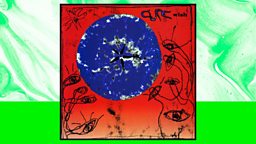
During the 1980s The Cure evolved from cult goths to chart regulars, with 1989’s Disintegration hailed as a masterpiece. They entered the new decade at the commercial height of their popularity, further establishing their credentials with 1992's Wish.
The band's ninth studio album debuted at No.1 in the UK charts, receiving a Grammy nomination and ultimately becoming their best-selling album. Across 12 tracks, Wish flows with ease and the bands full-band approach creates a dense, full sound throughout. We hear the range of The Cure’s talents throughout the album - Robert Smith’s talent for crafting solid pop songs shine in ‘High’ and the much-loved ‘Friday I’m In Love’, while the bands gothic, melancholic sounds are heard in tracks such as ‘Trust’, ‘Apart’ and ‘To Wish Impossible Things’.
To celebrate its 30th anniversary in 2022, The Cure reissued the album with 24 unreleased tracks.
Dr. Dre – The Chronic
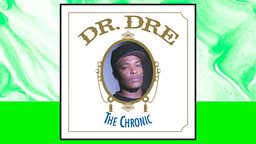
A masterpiece of West Coast Gangsta Rap, as Kanye West himself said ‘it’s the benchmark you measure your album against if you’re serious’. So you’d be justified in omitting the ‘West Coast Gangsta-‘ prefix altogether.
The album that introduced the world to Snoop Dogg, a year before his own era-defining debut Doggystyle, Snoop’s laid-back laconic flow had kids around the world rapping along. Dre was a visionary on this project, not just scouting and curating world-class talent (Nate Dogg, Warren G, and Kurupt to name a few) but pioneering and popularising a whole new sound in rap: G-funk. It was Dre’s talent for emulating funk with live instruments and synths rather than via scratchy sampling, the method more popular with his East coast counterparts, that produced the higher fidelity recordings perfectly geared for radio play. Combine that with his hit squad’s knack for writing killer hooks and you’ve got yourself an underground rap record that’s able to filter out to the suburbs and land itself in the pop charts.
En Vogue - Funky Divas
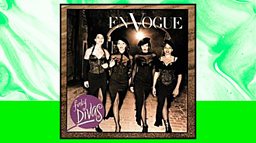
Building on the success of En Vogue’s Grammy-nominated debut album Born to Sing, the group’s follow-up Funky Divas became one of the top selling albums of the year, reached multi-platinum status, and debuted at No.4 in the UK charts.
Featuring top hits including ‘My Lovin (Never Gonna Get It)' and 'Giving Him Something He Can Feel', the record has been praised for its mix of contemporary R&B, soul, blues and some heavy rock in the case of 'Free Your Mind', which challenged racism, sexism and other prejudice. Funky Divas set the tone for R&B music going forward through the 90s and the group paved the way for many other female bands who would emerge later in the decade, including TLC and Destiny’s Child.
Eric B. & Rakim - Don’t Sweat the Technique
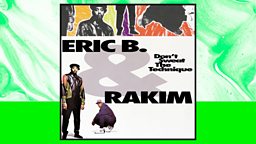
Recorded at The Hit Factory in New York City, Don’t Sweat the Technique was the final studio album from legendary hip-hop duo Eric B. & Rakim. Despite rumblings about disagreements between them, the record finished a faultless four album run and firmly cemented the collaborators' legacy as one of the most influential duos in music.
The record builds on the confident jazzy hip-hop sounds that the pair were renowned for, combining Rakim’s lyrical brilliance and Eric B’s ear for the perfect beats, mixing soul, funk and blues. Compared to previous albums, the subject matter was more socially conscious, exploring subjects from the Gulf War (which had ended the previous year), Rakim’s Muslim faith, and New York’s crack epidemic.
James - Seven
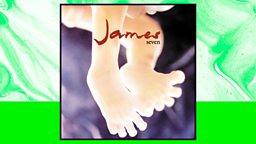
James’ fourth studio album showed there was more to the Tim Booth-led indie band than their ubiquitous 1991 hit Sit Down, and established them as contenders in the post-Madchester era.
With the in-demand Youth on producer duties, Seven saw a big new sound for James, typified in stadium-ready anthems such 'Born of Frustration', 'Sound' and the album’s title track, as the band moved into a territory more associated at the time with the likes of U2 and Simple Minds.
Their reward was a UK No. 2 album, spawning three Top 40 hits, and a place at the top table of early 90s pre-Britpop indie royalty. They’d repeat this success with 1993’s Brian Eno produced Laid, and go onto enjoy commercial success throughout the decade. The band split in 2001, but reunited six years later and to date have released sixteen studio albums, the most recent ‘All The Colours Of You’ in 2021.
The Lemonheads – It’s A Shame About Ray
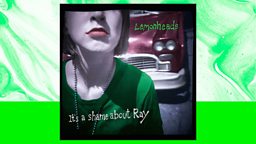
The Lemonheads' fifth album was a break-through international hit for the band. Inspired by an Australian newspaper story they saw about a kid called Ray who kept getting kicked out of school, the title track became their first song to chart in the UK. Despite this success, it wasn’t until later in 1992 when the alternative rock group released a cover of Simon & Garfunkel’s ‘Mrs Robinson’ that they truly reached the mainstream - leading to later pressings of the album to feature the track.
It’s a Shame About Ray saw The Lemonheads shift from the heavy punk sounds that was popular in the early 90s, and towards a softer, sun-soaked, pop-rock with Evan Dando’s voice invoking a melancholic nostalgia and fuzzy guitar melodies. At the time, this move away from their previous grungier records divided fans, but many now see it as a classic which encapsulates the ‘slacker’ rock of the 90s.
Manic Street Preachers – Generation Terrorists
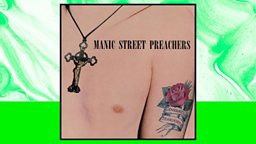
As a statement of intent, they don’t get much more confident than this debut from the then four-piece Welsh rockers - James Dean Bradfield, Nicky Wire, Richey Edwards (who just three years later would disappear, eventually declared ‘presumed dead’) and Sean Moore.
With 18 tracks packed full of energy and lyrics, provided by Wire and Edwards, touching on the political and the personal, the record matched the hype that had been generated by the band’s earlier single Motown Junk and their increasing press profile, in which they modestly declared the record would be the ‘greatest rock album ever’. The record spawned five UK Top 40 hits, among them 'Motorcycle Emptiness', 'You Love Us' and 'Slash n Burn', and helped the band gain mainstream attention.
While they managed to stay at arms length from the Britpop scene that emerged in subsequent years, this was an album that helped re-establish British guitar based music at a time when the grunge acts of the US were dominant, and paved the way for many of the acts that followed later in the decade.
The Manics continue to go strong thirty years on, having topped the UK Singles Chart on two occasions with 'If You Tolerate This Then Your Children Will Be Next' and 'The Masses Against The Classes', the first new No.1 of the 21st century. In 2021 they released their fourteenth studio album The Ultra Vivid Lament.
Mary J. Blige - What’s the 411?
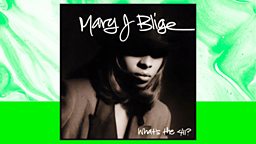
A few years after Mary J. Blige was signed to Uptown Records at 18 as the label's youngest artist, she dropped her debut album which was executive produced by Sean “Diddy” Combs. The fusion of hip-hop and soul alongside Blige’s honest, powerful delivery led to her being named as the Queen of Hip-Hop Soul. Havelock Nelson’s review at the time said it was ‘one of the most accomplished fusions of soul values and hip-hop to date’.
What’s the 411? had an unquestionable influence on contemporary R&B and marked the start of Mary J. Blige’s illustrious career. Since this stellar debut, she has gone on to win multiple awards including nine Grammys, an Emmy, and the Billboard Icon Award in 2022.
The Orb – U.F.Orb

1992 was a game-changing year for dance music, and The Orb’s second album U.F.Orb played a huge part in this. Reaching No.1 in the UK albums chart, the record makes you feel like you’re floating with its gentle, intricate beats. From their formation in 1988, The Orb played a huge role in carving out a new genre in dance - away from high intensity electronic music to a unique brand of atmospheric house, of which U.F.Orb is a perfect example. AllMusic called it the 'commercial and artistic peak of the ambient-house movement' and the group developed a cult following among club goers for their 'come down' music.
One of their most memorable moments of 1992 was the release of Blue Room, a 40-minute single which earned The Orb a Top Of The Pops appearance, . Since then, the group have gone on to have a long-running career, releasing their sixteenth studio album Abolition of the Royal Familia in 2020.
Pharcyde - Bizarre Ride II The Pharcyde
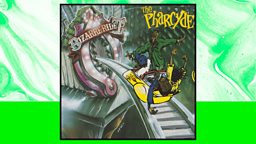
Contrast to the gangsta rap convention that dominated the West Coast, The Pharcyde’s Bizarre Ride II was a breath of fresh air to fans weary of all the tough guy posturing. Originally forming as a dance crew in South Central LA, these weren’t your everyday rappers. Instead they might resemble the everyday listener - the stoner, slacker or weirdo. Their songs were honest, free of ego, self-deprecating and most importantly - funny. The album only produced moderate sales in the year of its release until its second single ‘Passin’ Me By’ certified it gold. Allmusic hails the album’s unique production as ‘some of the tightest and most inventive of any hip-hop record of the era’. While at the time the group’s debut took a while to gain momentum, the reception, the enduring critical acclaim and the album’s legacy are testament to the innovation and creativity that went into its conception.
Vital to the success of the record were producer J-Swift’s smooth jazzy compositions. Rich with exquisite samples from the likes of Quincy Jones, Donald Byrd and Herbie Mann they elevated the collective’s quirky raps - cementing this release as one of the best alternative hip-hop albums of all time.
PJ Harvey - Dry
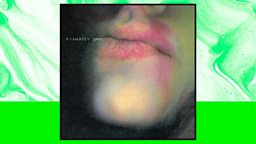
Dry is a storming debut which marked the arrival of an extraordinary artist in PJ Harvey. Recorded in Yeovil with bassist Steve Vaughan and drummer Rob Ellis, the critically-acclaimed album is fearless and furious - perhaps because Harvey thought this might be her only chance at making a record. She told Filter magazine in 2004 “It was a very extreme record… I felt like I had to get everything on it as well as I possibly could, because it was probably my only chance."
The album combines furious blues-rock, post-punk and Harvey’s dark humour to create a ground-breaking, gritty record that was just the start for a distinctive, boundary-breaking artist who continues to innovate.
Rage Against the Machine – Rage Against the Machine
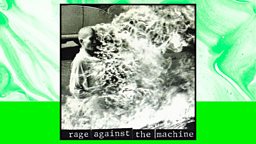
Certainly unlike any other album released that year, Rage Against The Machine’s eponymous debut presented the world with a stiff concoction of heavy metal, funk, hip-hop and potent political messaging. Paving the way for the nu-metal explosion that would dominate charts and festival stages by the end of the decade, what really sets Rage apart is their conviction.
Although track two 'Killing In The Name' hears frontman Zack de la Rocha rousing a whole generation with the mesmerising chant “F**k you I won’t do what you tell me”, it’s the more nuanced lyrical content on this album that channelled the apathetic angst of the grunge era into something more urgent and intellectual. Whether it’s challenging institutional racism in the police on 'Killing In The Name' or exposing the indoctrination of the population through mass media on 'Bullet in the Head', every single track has a powerful political statement to make. Even the front cover packs a punch - the self-immolation of Buddhist monk Thích Quảng Đức.
Lyrical content aside, the musicianship on display is something to behold - Tom Morello’s innovative guitar work as revolutionary as Zack’s rhymes. Put it all together and you have a body of work that’s as important today as it was 30 years ago.
R.E.M. – Automatic for the People
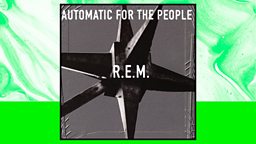
After building up a loyal following and critical acclaim to become one of the leading alternative bands of the 1980s, R.E.M. enjoyed a big mainstream hit with their 1991 album Out of Time, featuring the likes of 'Losing My Religion' and 'Shiny Happy People' (the latter since disowned by the band).
Just over a year later they unveiled Automatic For The People, a darker more brooding album that followed its predecessor straight to the top of the UK Albums Chart on release. The record proved to have staying power, returning to No.1 on three further occasions and spending over 12 months in the UK Top 20, while singles such as 'Drive', 'Man on the Moon', and 'The Sidewinder Sleeps Tonite' all helped drive up album sales. Then came the big one, 'Everybody Hurts', one of the band’s signature tunes, which gave everyone the chance to have a big old collective weep, while also feeling uplifted by the song’s messages of universal feelings and hope.
The band would go on to enjoy six further No.1 albums in the UK before calling it a day in 2011, following 31 years of services to music, while Automatic for the People has sold over 18 million copies worldwide.
The Shamen - Boss Drum

For four weeks in September 1992, The Shamen were at the height of their fame. After abandoning the psychedelic rock of their debut album for a more commercial dance sound through the late 80s/early 90s, they finally hit the No.1 spot with a dance classic - helped a little from that magic ingredient of controversy. Each Thursday, they could be found entertaining the nation on prime time ���˿��� One, as they took to the Top of the Pops stage, encouraging a generation of youths to declare that ''Eezer Goode 'Eezer Goode He's Ebeneezer Goode’, in a thinly disguised drug reference.
The Shamen's Mr. C later told Top Of The Pops: The Story of 1992: "We knew the timing was right for a song that poked fun at the rave scene… People said this song was promoting ecstasy and drug culture, but it wasn’t, it was sending it up.”
Later in the year, the ravers unveiled their fifth, and by some way, most successful LP Boss Drum which would reach No.4 in the UK Album Chart, and be among the year’s top 30 best-selling records. As well as their signature song, the album contained four further top 20 hits - summer anthem 'L.S.I. (Love Sex Intelligence)', the title track, 'Phorever People', and 'Re:Evolution', an eight-minute monologue by US mystic set to techno music, arguably one of the most unique tracks to reach the charts.
It was a golden era for Mr C and Shamen founder Colin Angus, but while they and the dance music genre continued to evolve throughout the 90s, by the time of their 1995 follow-up album guitars were back in fashion and Britpop was at its height, making commercial success harder to come by. The group had disbanded by the end of the decade, but they left a legacy of music, that particularly in the early 90s perfectly encapsualted the sound of the era.
Stereo MC’s - Connected
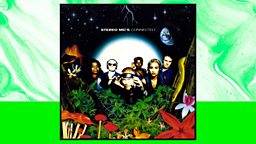
The British dance group, known for their fusion of hip-hop and electronic music, became one of the first UK rap acts to achieve success in the US in the early 90s - with their 1991 track 'Elevate My Mind' becoming the first English hip-hop single to reach the US charts - but it wasn’t until their album Connected that they achieved success in their native UK.
The third album is considered a dance classic but spanned a number of genres with its mix of rap, electronic and indie-rock. Frontman Rob Birch later told Music Radar, “we were a bit of everything. Nobody could put their finger on us. What got us through was that we were realist music, saying something about where we were coming from.”
At the time, it received much industry praise - with a Mercury Prize nomination in 1992 and winning Best British Album and British Group at the 1994 Brits. The infectious, internationally chart-topping title track remains Stereo MC’s most famous song, one that immediately transports the listener straight back to 1992.
Sugar – Copper Blue
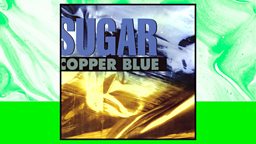
Guitarist and lead vocalist Bob Mould had already gained a cult following in punk rock band Hüsker Dü but it was with his band Sugar where he received the greatest commercial success, as well as critical acclaim across the board - with NME naming Copper Blue their 1992 Album of the Year.
After Hüsker Dü broke up in 1988 and a few solo albums later, Mould formed Sugar alongside bassist David Barbe and drummer Malcolm Travis. Sugar’s debut album was applauded for its loud punchy guitar and catchy pop rhythms, and achieved success in the top 10 in both the UK and US charts. Mould credits the success of Nirvana’s Nevermind in 1991 as a major reason that the public were more receptive to punk-rock, telling NPR “…the success of Nevermind re-tempered the ears of the listeners throughout the world. It was a heavy, punky record, but there was something about it that was so accessible that it opened up all these pathways for other musicians — myself included — to have our music heard.”
-
![]()
The Prodigy Artist Collection
A selection of programmes celebrating the music and career of The Prodigy.
-
![]()
Lauren Laverne take it back to 1992
Lauren join's 6 Music's exploration of The Prodigy Experience thirty years since its release and is joined by XL Recordings label boss Richard Russell with his memories of working with the band. Also, there's nothing but songs from 1992.
-
![]()
The Prodigy's Liam Howlett Dirtchamber Breezeblock Mix
As part of 6 Music's Deep Dive into The Prodigy's debut album Experience, a chance to hear Liam Howlett's Dirtchamber Breezeblock mix which he made especially for Mary Anne's 90s Radio 1 show The Breezeblock.
Follow ���˿��� Radio 6 Music on and
Listen to 6 Music on ���˿��� Sounds, or find out other ways you can listen
Discover classic 80s and 90s albums
-
![]()
19 albums that define 1991
Featuring Nirvana, The KLF, Massive Attack and Primal Scream.
-
![]()
11 albums that define 1994
Featuring Oasis, Manics, Blur and Nas.
-
![]()
15 albums that define 1995
Featuring Blur, Oasis, Björk, D'Angelo, Goldie and PJ Harvey.
-
![]()
15 albums that define 1997
Featuring Daft Punk, Björk, The Prodigy and Radiohead.
-
![]()
19 albums that define 1999
Featuring The Chemical Brothers, Kelis, Missy Elliot, and Sigur Rós.
